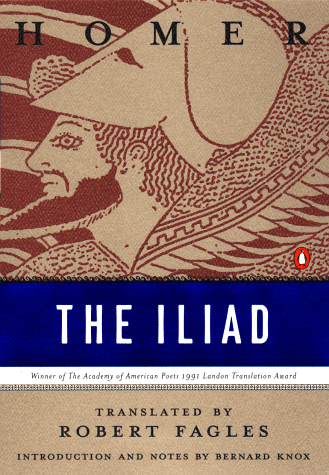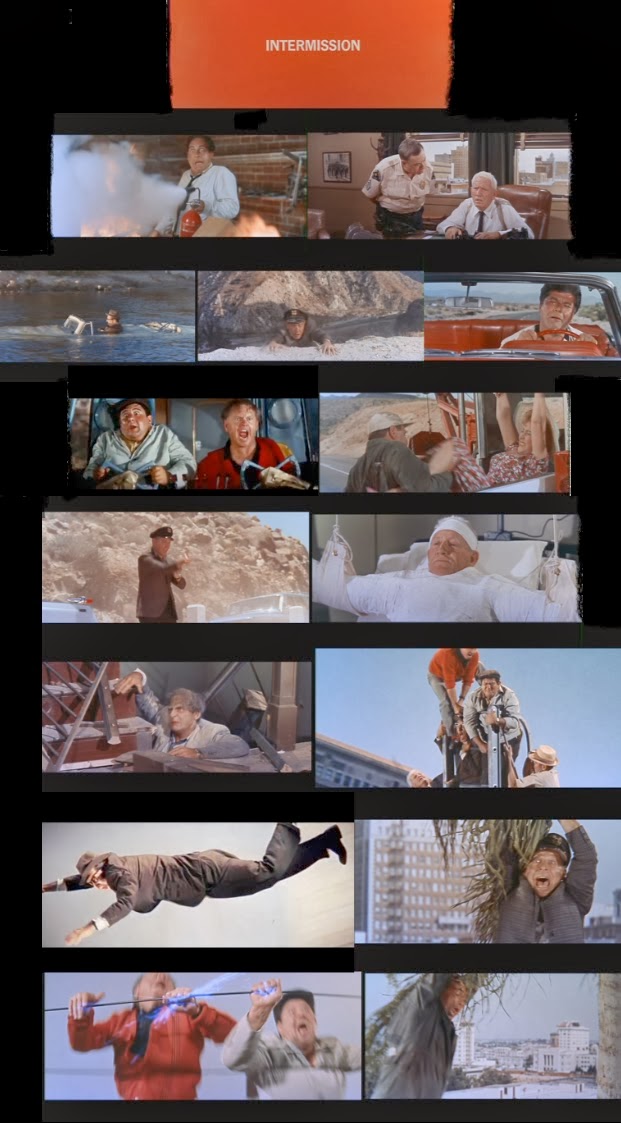This is a section of the blog where I have something off the side and doesn't pertain to the list I have in the introduction. These series of blogs are more of speculations and wishful thinking on my part. Its random ideas I have in my head that doesn't really belong in the list but its also too interesting to ignore so I call it, "Something Less Serious" for selected posts.
Mad World is full of repetitious gags and phrases throughout the mammoth comedic epic. Some would say its too long and repetitious in its story or (lack of ) for some people. I would argue however that was the intention of William and Tania Rose.
What if I told you that the Roses followed a literary device that was applied in writing the Bible, the Illiad, and even the Harry Potter series?
This device is known as the ring composition in which the story beats repeats itself throughout the narrative. This is something you see clearly in Mad World which takes its time in laying out its story and its episodic style of slapstick humor to make a solid whole. To use an old cliche for this movie, "there is a purpose behind the madness."
Renowned anthropologist, Mary Douglas coined this term of a "ring composition."
In her book, Thinking in Circles: An Essay on Ring Composition (Yale, 2007), she details how stories from Homer's Iliad to Laurence Stern's The Life and Opinions of Tristam Shandy, Gentleman, to include key passages and books of the Old and New Testaments and epics from every aural culture living and dead are configure as rings with specific characteristics. She explains that this "macro- structure" is invisible to the analytic modern readers focused on plot, language, and theme but that its internal echoing on top of its beginning and ion mark a ring artistry.
"Closure is the only, or even the principal, condition for a ring. Essentially, ring
composition is a double sequence of analogies. First a sequence of analogies.
First a sequence is laid down, then at a certain point the sequence stops and the
series turns around and a new sequence works its way backward, step by
step toward the beginning. This puts each member of the new series parallel
to its opposite number in the first series, so the return journey reverses the
order of the outgoing journey. The longer ring forms tend to embellish the mid-
turn with an elaborate commentary. A well-make turning point is a sign of a well-
designed ring composition. Sometimes it is so long as to mislead the reader about
its place in a larger sequence."
Ms. Douglas has "abstracted seven rules or conventions from long ring compositions" whose "meaning" is in the middle "that help identify this story scaffolding and reveal its principle message. These seven "rules" are not "hard and fast" but indicators reflecting the technical problems to be overcome telling a successfully rounded tale. For our purposes I think they can be distilled even further down to our characterisitics:
1. THE BEGINNING AND END MEET
2. THE BIG TURN: Prof. Douglas explains it this way:
"If the end is going to join the beginning the composition will at some
point need to make a turn toward the start. The convention draws
an imaginary line between the middle and the beginning, which divides
the work into two halves, the first, outgoing, the second, returning. In
a long text it is important to accentuate the turn lest the hasty reader miss it,
in which case the rest of the carefully balanced correspondences will also be missed."
3. PARALLEL FRONT AND BACK HALVES:
Prof. Douglas:
"After the mid-turn the next challenge for the composer of a ring to arrange the two
sides in parallel. This is a done by making separate sections that are placed in
parallel across the central dividing line. Each section on one side has to be matched
by its corresponding pair on the other side. In practice the matching of sections often contains
surprises; items are put into concordance that had not previously been seen to be
similar. Parallelism gives the artist opportunities of taking the text to deeper levels of
analogy. When the reader finds two pages set in parallel that seem quite disparate, the
challenge is to ask what they may have in common, not to surmise that the editor got muddled."
4. RINGS WITHIN RINGS (Nerds 59-61)
As I stated before there is a reason behind the madness and there is parallelism throughout this gigantic film. Throughout you see reflections (or reverse echoes) of certain scenes. Let's take a look at these reflections.
1. Big Dubya and Mad for Money/Airborne Hag:
2. Head Games and Crooked Cop:
3. Splits and The Dig:
4. Reckless and "W":
5. Other Means and Arrival:
6. Piece of Pie and Loopy:
7. Big Bang and Out of Control:
8. Intermission
Dead center of the film as all the characters in conflict and it foreshadows what happens to all of them at the end but it also references the beginning with all the vehicles sailing out there including Otto! They are all clutching onto something like they do on the ladder scene and Culpepper speech about how he is ruined at the end of the film is pronounced very loudly over the two phones before the intermission card shows up in a wordless scene.
Not only that you also have phrases that is repeated time and time again throughout the film like, "we're wasting time!" As stated before there is quite a bit of foreshadowing that you pick up after repeat viewings such as Culpepper telling Aloysius, "everything is going my way" which it it doesn't as it shows near the end of the first act.
Or the fact near the cliffhanger of the first act that Otto raises his fist at the kid as he is sinking his convertible in the river and one of his arms is raised at the end because his entire body is broken.
Or even the fact that Smiler foresees everything that was going to happen even in this line, "watch out for the bulls...Lousy, stinkin' bulls everywhere. Bulls all over the place!"
Not only does it foreshadows the police watching over the zany racers
but also Culpepper lies to them about being an honest cop!
I don't think enough praise is given to William and Tania Rose for providing a very concise and jam packed script. In splitting the film into eight rings you can see it form into one major ring that is really exemplary and very solid. The Roses does appear to understand the mechanics of the structure to a high degree.
EPILOGUE:
EPILOGUE:
WORKS CITED
1. Douglas, Mary. Thinking In Circles: An Essay on Ring Composition. Yale University Press: 2007.
2. Ed. Granger, John and Prinzi, John. Harry Potter For Nerds:Essays For Fans, Academics, and Lit Geeks. "On Turtleback Tales and Asterisks". Unlocking Press: 2011.
3.It's A Mad, Mad, Mad, Mad World. Dir. Stanley Kramer. Perf. Spencer Tracy, Milton Berle, Sid Caesar, and Johnathan Winters. 1963. MGM, 2001. DVD.









%5B1%5D.jpg)





























No comments:
Post a Comment